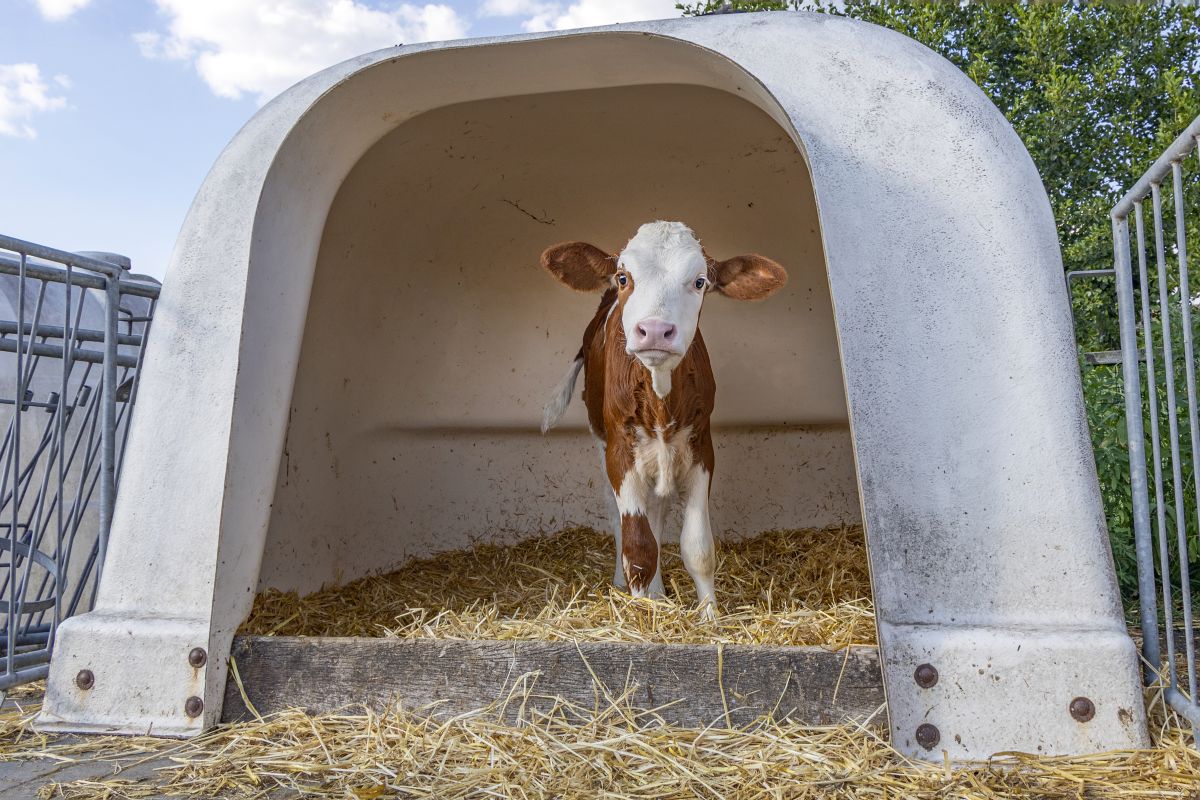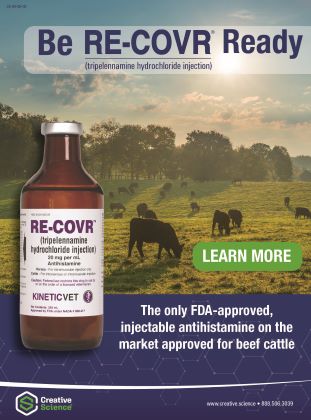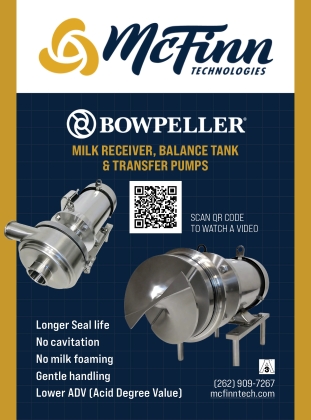Calf Housing and Management

Calf Housing and Management
Calf housing is essential for protecting the health and growth of young dairy calves. When it comes to calf housing options, how do you know if you’re using the right option? Our goal is to get calves off to the best start and to keep them healthy and thriving. Traditional systems—like outdoor individual hutches and indoor individual pens—offer ease of monitoring and reduced pathogen spread, yet mounting evidence shows that social housing (pair or group rearing) enhances calf development across multiple dimensions.
Getting calves off to a good start should start with solid management practices. Management practices are first and foremost the first step for maximizing calf health, growth, and welfare across all housing systems. Penn State Extension recommends grouping calves by similar age together. They’ve found one of the most important strategies is an all-in/all-out approach by room or row, which ensures that calves of the same age group occupy a space simultaneously while allowing the area to be completely empty and thoroughly dry between groups. Between groups, hutches or pens should be power-washed and disinfected, and their positions rotated, when possible, to allow the ground underneath to dry, reducing pathogen buildup and the risk of disease transmission. In this study, we see success for two reasons. First, similar sized and aged calves are kept together to make the overall management practices easier. Secondly, this allows through cleaning and managing biosecurity.
Sort by Age
Maintaining age-tight groups is equally important. Ideally, calves in a single group should differ in age by no more than two to three weeks, which helps reduce competition, stress, and the spread of respiratory infections. In systems using automated milk feeders (AMF), stocking density should be limited to 15–20 calves per nipple to minimize feeding frustration, cross-sucking, and aggressive behaviors that can compromise welfare and growth (Penn State Extension; Iowa State University Extension).
Feeding and Weaning
The layout of feeding stations also plays a critical role in calf health and behavior. Water and starter feed should be located close to the resting area, with clear sightlines to reduce crowding and prevent calves from getting trapped in dead-end corners. Having enough bunk or feeder space should be a priority to ensure all calves in a group can access feed simultaneously, which supports consistent intake and growth.
Nex, we will look at weaning. A well-structured weaning program is essential for a smooth transition from liquid to solid feed. In AMF systems, software-controlled slow step-down weaning allows calves to gradually reduce milk intake while increasing starter consumption. For bucket-fed calves, milk volume and feeding frequency should be decreased gradually over a period of 10–14 days while encouraging intake of solid feed to ensure optimal growth and minimize stress according to research from Penn State Extension.
Proper Ventilation and Maintenance
Ventilation maintenance is another key factor in preventing respiratory disease. Calf barns should be inspected seasonally to verify that tube outputs and seals are functioning correctly, with smoke tests performed to detect dead zones. Curtains and other adjustable ventilation elements should remain operational and avoid drafts at calf level in cold weather. BRD is a problem we continually fight, so keeping the area ventilated, yet minimizing cold drafts will get you off to a good start.
Finally, drainage and bedding management are fundamental to calf comfort and hygiene. Resting areas should be kept crowned and dry, with alleys scraped regularly and slopes or gutters maintained to prevent water accumulation. Bedding, whether straw, wood shavings, or other materials, should be replenished generously—particularly during cold temperatures—to provide warmth, cushioning, and insulation against moisture-related stress (The Dairyland Initiative).
Individual Housing
Well-run hutch lines are still a staple for biosecurity and simplicity. Give each calf deeply bedded, dry resting area and keep the pad draining: space hutches and build pads with a slight slope. You might also consider drainage so urine and waste water exit instead of soaking the pack. Many farms prop the rear of the hutch 6–8 in for summer airflow. Face hutches for steady air movement but be mindful of cold drafts on calves.
In heat, open all vents; in winter, rely on bedding “nesting” rather than trying to warm the air. Typical commercial hutch prices land around $350–$450 each (single) with pair/multi-hutches higher; DIY wood or poly builds can be cheaper according to an estimate by Iowa State University.
Group Housing
Research from Wisconsin State University sheds some light on group housing. It shows that calves housed in pairs or groups demonstrate markedly improved outcomes compared to those reared individually. For example, pair-housed calves show a 5 % higher lying time, 32 % less aggression, 71 % more social interactions, as well as 26–59 % longer feeder visits, and 42–82 % shorter delays before their first feeder visit
Group-housed calves also explore novel feeds 50 % faster, which show us reduced stress and better adaptation. From a health standpoint, while about 23 % of calves develop disease within their first 90 days, respiratory illnesses are less frequent in social setups—with pair housing achieving 57–71 % lower rates compared to individual systems. There’s also evidence of 50 % reduced odds of antibiotic-resistant E. coli in pair-housed calves. However, the impact on diarrhea and broader morbidity is variable, depending heavily on management practices such as hygiene, ventilation, and disease monitoring.
Performance-wise, social housing yields notable growth advantages: pair housing increases preweaning starter intake by 37 % and average daily gain (ADG) by 14 %, while group housing can boost postweaning starter intake and ADG by around 18 % according to Wisconsin State University research. Larger meta-analyses reinforce these findings, showing that early group housing correlates with higher concentrate intake, ADG, and weaning weight, along with reduced stress behaviors like self-grooming—further supporting welfare benefits
Indoor Hutches
If you prefer a roof and centralized chores, design pens with solid side dividers to shoulder height, open fronts, open backs above for air exchange. Keep floors sloped and drain liquid run natural ventilation. Indoor pens provide weather protection, centralized feeding/cleaning, biosecurity like hutches without trudging through mud/snow. Some of the harder aspects to control in an indoor barn are ventilation needs. It must be designed and maintained correctly.
Indoor hutches or individual pens do offer advantages in early disease detection and individualized care, but they come with some considerations. Studies reveal that socially housed calves outperform individually raised ones in learning tasks. Individually housed calves also exhibit higher fear responses including elevated cortisol and stress behaviors.
Research consistently shows that pair and small group housing considerably improve welfare, growth, feeding behavior, and stress resilience in calves, without necessarily increasing disease risk—provided management is sound. The positives include better social development, cognitive performance, faster feed intake, and more robust growth, balanced with the potential downsides of elevated disease risk if sanitary, ventilation, or grouping standards slip.
Which is the Best Option for You?
Ultimately, the choice between individual and social calf housing is not a simple one, as the best system depends on available resources, labor, and management capabilities. While traditional individual housing systems like hutches offer proven benefits in biosecurity and simplified monitoring, there is some research that shows advantages of social housing. Calves raised in pairs or small groups show improved growth rates, better feed intake, reduced stress behaviors, and enhanced cognitive and social development.
However, the potential benefits of group housing can quickly deteriorate from poor hygiene, inadequate ventilation, improper grouping, or crowded feeding. Therefore, you should consider if you have the capacity for the management. By prioritizing bedding, ventilation, and weaning, producers can create an environment where young calves thrive.
By Jessica Graham
November 2025
More Cattle Information here:
If you enjoy the Outdoors, The Iowa Sportsman



